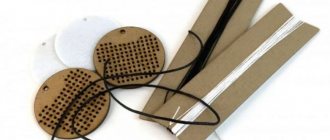A bathroom shelf not only serves as an interior decoration item, but also performs useful functions of placing and storing personal hygiene items, cosmetics, and household chemicals.
The range of shelves presented in stores does not always allow you to choose the appropriate option. It’s easy to make beautiful bathroom shelves with your own hands from various materials.
The advantage of a homemade bathroom shelf is its maximum convenience and originality. A creative approach to work will allow you to create a unique product that not only fits in size, but also meets all the requirements of family members.
It’s easy to develop bathroom shelf ideas yourself or use ready-made store models as a basis. Making a shelf with your own hands will significantly save your family budget.
Brief overview of the article
Types of bathroom shelves
There are a large number of different models of bathroom shelves. There are no restrictions, but the product must meet a number of specific requirements:
- the shelf must be strong and securely fastened;
- the design should be roomy, comfortable and consistent with the overall decor of the room.
Conventionally, bathroom shelves are divided into several types:
- hanging shelves are securely attached to the wall using fasteners;
- removable options are temporary structures and are secured with suction cups;
- the corner model is designed for tight spaces and saves space;
- the floor design is similar to a small shelving unit and requires enough space to accommodate it;
- hanging models look original, but are intended for large areas;
- the built-in option is an equipped niche in the wall and requires certain skills to manufacture.
When planning to make your own bathroom shelf, the first thing you need to do is decide on the design and dimensions of the product.
The benefits of making shelves yourself
Self-made furniture production has long been no longer just a goal of saving money - it is an excellent opportunity to show your creative abilities. Today, designers are developing various models of decorative shelves that can be inspired by.
The main advantages of self-manufacturing of the structure are highlighted:
- Taking into account all, even the smallest requirements. Only by making furniture yourself can you do it exactly according to your preferences. After all, not every master can correctly understand an idea and then implement it.
- Saving money. When ordering furniture, you will have to spend money not only on purchasing materials, but also on the work of the craftsman. Not every person can find the extra amount to pay for such services. Therefore, you can try to build the structure yourself. This is especially true in cases where it is necessary to produce a large amount of furniture.
- Save time. Typically, experienced specialists have a long queue, which is why you will have to wait for your order for several weeks, or even months. While making furniture yourself will take much less time (even for beginners).
- Simplicity of the process. For some, it may seem that making shelves is a labor-intensive process, but this is far from the case. Following step-by-step instructions, anyone can cope with such actions. In this case, it is important to take correct measurements and place marks. In addition, the work uses a standard set of tools that can be found in every person’s home.
- Experience. Shelves are exactly the element of the interior with which you should start making furniture. Thanks to this, you can easily master the creation of other more complex structures. For some people, a craft can be turned into a business. It is worth noting that all family members can be involved in such simple work.
A simple version of functional shelves
Materials
When considering what you can use to make a shelf in the bathroom, you need to take into account the high humidity in the room.
This fact influences the choice of materials in a certain way.
- Wood and its derivatives will require additional processing to extend the life of the product.
- Plastic is resistant to moisture, lightweight and has the necessary strength margin.
- Glass of sufficient thickness will serve as an excellent material for a bathroom shelf. It is important to correctly calculate the load on the glass structure.
- Metal is a good option, but, like wood, it needs protection from moisture.
- Drywall enjoys well-deserved popularity due to its durability and ease of use.
The material for the shelf should be selected depending on the design of the product, your professional skills and personal preferences.
Tips for placing shelving
First, one general and most important piece of advice. The bathroom contains a large number of utility networks: cold and hot water pipelines, sewerage, electrical wiring, elements of the ventilation system, etc. The shelving should be placed in such a place that it does not restrict access to the networks. This is very important not only for pipeline maintenance, but also for eliminating various emergency situations as quickly as possible. As for design issues, there are several options for placing shelving.
| Shelving placement | Short description |
| Angular | Allows you to make the most of the free space in the bathroom. Such a rack has three vertical supports, shelves in the form of triangles or a sector (segment) of a circle. Quite functional furniture, but the linear parameters are limited by the dimensions of the corner. Disadvantage: significant restrictions on length and width; the rack is considered stationary. |
| Frontal | The rack is installed against a free wall; it is possible to move the furniture to another place as needed. Dimensions are limited only by the wishes of the users. The number of shelves is coordinated with the number of bathroom users. |
| In a niche | The location of the rack is a niche in the bathroom. Niches can have different sizes; the rack is manufactured taking these parameters into account. A fairly common option for installing furniture. The advantage is maximum stability, falling of the rack is practically eliminated. |
Bathroom rack
In this article we will not talk about various interior design options; there is only one universal piece of advice. Choose the shelving option and its location that you like. You can listen to the advice of designers, but your decision should be final. None of the advisers will use the bathroom; it is not for them to judge what you personally like and feel comfortable with.
Wooden bathroom rack
Choosing a place to place the shelf
The determining factor for where to attach the shelf in the bathroom is the size of the room and the configuration features of the product.
Note!
- Do-it-yourself wardrobe: a review of ways and methods on how to build a stylish and original wardrobe (video and 145 photos)
- Do-it-yourself furniture restoration - removing chips and scratches, restoring surfaces. Instructions with photos and video tips
- DIY ottoman: how to make it at home. The best ideas, master classes. Photo + video review of beautiful ottomans
The traditional place for placing a shelf is a wall. In conditions of limited space, shelves can be hung on the door leaf. In this case, the decor of the product is selected to match the design of the door.
Built-in shelves look original, but their installation requires professional skills and serious financial investments. For this reason, the manufacture of such structures does not always make sense.
Metal fasteners are used for fastening.
Sometimes small shelves are fixed using suction cups, but such fastening is not very reliable.
Pros of making a homemade shelf
Every person has the opportunity to make a piece of furniture that will be used in everyday life for a long time. The shelf in this case is no exception. Moreover, the procedure for its manufacture cannot be called complicated.
So, what are the pros of a DIY built-in shelf? Let's talk about them:
- the ability to create an option that suits all the necessary parameters;
- independent choice of material and coating for the future shelf;
- designing the work process, including all the thoughtful details.
Of course, for the finished accessory to look great, you need to have certain knowledge and experience in this area of craftsmanship. These skills will help you make something truly convenient.
Glass shelf
The advantage of glass models is ease of installation. Often special holders are used to secure elements.
To work you will need:
- glass with a thickness of at least 4-5 mm;
- fastening elements;
- dowels
Operating procedure.
Note!
- How to make a backlit mirror with your own hands: necessary materials, tools. Tips for choosing lamps and LED strips
- How to make a computer desk with your own hands from wood or chipboard. Photo/video master class + description of models
- Do-it-yourself folding table: description of types, calculations and selection of tools and materials. Video master class for beginners
- Cut out the parts according to the drawing.
- Carefully process the cuts.
- Mark the mounting location on the wall.
- Attach fastenings.
- Secure the shelf.
It is recommended to hang the glass shelf out of the reach of children. The structure should be placed strictly horizontally to avoid accidents.
How to attach a shelf to tiles
The walls of the bathroom are faced mainly with tiles. Therefore, when installing a towel shelf, not only the wall material is taken into account, but also the thickness and structure of the finishing layer. To drill holes in ceramics, you will need to perform a number of preparatory work.
What not to do:
- knock down the glaze layer first;
- stick on masking tape.
What should be done:
- select a drill;
- sharpen the drill if necessary.
There is a special type of drill, the packaging of which says: “For working with glass and tiles.” But you don't have to buy new ones in the store. If you have a pobedit-tipped drill of the required diameter, it can be sharpened and used to drill a hole in the tile.
Drill sharpening
The most important thing in this work is to go through the first layer of tiles as gently as possible. It's thin and fragile, so you won't need the hammer drill mode. When using a drill to pass through this layer, set the mode to low speed.
Stages of work
Lightweight steel corner shelf
Step 1. Mark the installation points of the brackets on the wall. To do this, each of them is placed on the wall so that they are at the same line level.
Marking shelf position
Step 2. Fix the drill in the working tool.
Core punching before drilling
Drilling holes in tiles
Step 3. Using slight pressure, drill holes in the top layer of the tile.
Step 4. Dust the surface and continue drilling to the depth of the tile. To remove dust, you can use a vacuum cleaner or dry rags.
Step 5. Change the drill to one that matches the wall material.
Step 6. Drill a hole in the wall to the required depth.
Step 7. Drive in the dowel with light blows of a hammer or mallet.
Installation of dowels
Step 8. Secure the shelf with screws.
Tightening the screws, fixing the shelf
Plasterboard shelf
The use of plasterboard allows us to produce structures of any configuration.
The advantages of drywall are that it:
- strong enough to withstand significant loads if installed correctly;
- flexible and low cost.
In addition, if it is necessary to change the design of the room, the plasterboard structure can be easily repainted in any other color.
Types of products and their scope
There are several types of shelves. They differ in their structure and scope of application in the interior space. These include:
- Removable products. They have minimal weight and have good mobility. They can be placed in different parts of the bathroom. This option is ideal for various types of redevelopment.
- Hanging models. They are most often used in small spaces where every cm plays an important role.
- Corner shelves. This type is also used in small bathrooms. They are neatly fixed in the corner parts of the room.
- Floor structures. The model is suitable for spacious rooms. There is a spacious storage system.
- Stationary shelves. This option cannot be dismantled. They are carried out at the initial stages of finishing work. The structure contains plasterboard and ceramic tiles. They help make a strong foundation that will last for quite a long period of time.
Instructions on how to make a shelf with your own hands
To work you need to prepare:
- guides and supporting profiles;
- dowels;
- slats;
- self-tapping screws;
- sheet of drywall.
Operating procedure.
- Mark holes for dowels on the wall.
- Using dowels, attach the guide profile to the wall.
- The supporting profile is sequentially attached to the guide profile. This will be the basis of the entire structure.
- The multi-level structure must be reinforced with slats. Fix the slats with self-tapping screws.
- It is important to follow the order of installation of the frame so that the shelf can withstand heavy loads.
- After completing the work on arranging the frame from moisture-resistant plasterboard, it is necessary to cut sheets of the required size.
- The parts are fixed, the supporting profile is also sheathed with plasterboard.
- The seams are sealed with putty.
- After the putty has dried, it is necessary to coat the product with a primer in several layers.
- For structural reliability, perforated fastening elements can be attached to the corners. They are carefully hidden under a layer of putty.
- After drying, the surface of the product is smoothed with emery cloth and covered with decorative plaster.
In a similar way, it is easy to make a shelf of any configuration from plasterboard. Installing shelves in the bathroom with your own hands from plasterboard will allow you to bring any design idea to life.
Wooden shelf for the bathroom
Beautiful wooden shelf
A DIY bathroom shelf made of wood is also a fairly simple task. The main thing is to make sure that the material is well protected from a damp environment. If you have a choice of wood, it is better to take boards made of moisture-resistant wood. If this is not possible, then the moisture resistance of the material can be organized independently using methods such as:
- Using regular paint, applying it in several layers;
- Moisture-repellent varnish coating;
- Using self-adhesive film.
This board finish can also become an excellent decor, but the most important thing in this process, for any of the options, is to sand it well and degrease it.
Individual bathroom furniture. Recommendations for the selection of materials and design
Having prepared the materials for the shelves, you can begin to attach them.
- To do this, you can use special metal holders for bathroom shelves, which are shaped like the letter “G”. It is enough to choose their size correctly - and the homemade shelves in the bathroom will be securely fastened, and they will look harmonious.
- There is another mounting option for a shelf in the bathroom. It is more mobile, although it will take up more wood material. It can be executed by fastening two horizontal boards on the sides with two vertical ones so that it turns out something like a cabinet, only without the back and front walls. This structure can be moved to another location at any time. It is also used when it is not possible to make holes in the wall, for example, if tiles are laid on it.
Attaching a wooden shelf
The process of installing a wooden shelf on a tiled surface
How to fix a shelf in the bathroom yourself?
- Before attaching a shelf in the bathroom, it is necessary to take measurements, noting the locations of future attachments. It is necessary to ensure that the finished shelf is positioned strictly horizontally. A calibrated eye gauge or building level will help with this.
- The next step before installing the shelf in the bathroom is to mark the mounting location on the wall. To do this, you need to place the part with fasteners in the place where it will be located and mark the locations for the holes. Use a punch to make holes in the marked places.
- For walls lined with tiles, first this is done without impact mode, so as not to damage the tiles.
- By inserting dowels into the holes, we fasten the structure - and the shelf is ready.
Corner wooden shelf
Corner shelf made of wood for the bathroom
A special feature of this type of bathroom shelf is the need to resolve the issue of how to attach the shelf in the bathroom. In this it has something in common with the above-described model of fastening a wooden shelf, but in this case the installation features are different. According to the design, the shelf will be angular and will consist of four horizontal surfaces attached to a wooden vertical axis.
What is the best corner shelf for a bathroom? Types and design features
Before making a shelf for the bathroom, you need to prepare the horizontal surfaces. How to make shelves for this design:
- First, we select the material. It can be chipboard; it is better to choose a thickness of at least 6 mm.
- We make a hole in a sheet of chipboard with a nail, using thread and a pencil, draw a circle, the center of which will be this nail. The radius of the circle will be equal to the desired length of the future shelf. Next, you need to cut out this circle using a jigsaw or hacksaw and cut it along the diameter into four even parts so that the angle of each part is 90 degrees.
- Before assembling the bathroom shelf, you will need to prepare the base for attaching the shelves. To do this, you need to take a wooden strip, attach it to the corner where the shelf will be placed, and mark the location of the top shelf. Next, dividing the remaining space into equal parts, mark the locations of the remaining shelves.
- It is better to make grooves for fastening chipboard sheets with a saw with fine teeth so as not to destroy the lath. Along the lines marked on the lath, you need to make two cuts up to half the width, then use a knife or chisel to cut out a groove. Using this method, grooves are made for all four shelves.
- Before hanging a corner shelf in the bathroom, we try on the boards to the grooves; for a better connection, you can additionally sand the shelf grooves and slats.
- To install the structure, you first need to attach the rail to the desired corner. Installing a shelf in the bathroom is done using mounting adhesive. Glue is applied to the back side of the slats and attached to the wall; for greater reliability, you can glue the slats with tape or mounting tape while it dries.
- When the structure is dry and holds securely, you can remove the tape and insert the shelves into the grooves; if they fit correctly, there will be no need to glue them additionally. This type of shelf has the same design as a plastic bathroom shelf with spacers.
Corner shelf made of MDF
A compact corner shelf for the bathroom can be made from MDF or wood. Wooden parts must be dried and impregnated with a protective composition against moisture. Paint or varnish will help extend the life of a wooden product.
To work you need to prepare:
- MDF sheet;
- fasteners;
- jigsaw;
- screwdriver;
- compass;
- pencil.
Operating procedure.
- To make a corner shelf, you need to draw templates for cutting out parts. Using a compass, mark a circle of the required diameter and divide it into four equal sectors.
- Parts of the product are cut out exactly along the contours, the edges are treated with sandpaper.
- The parts must be connected so as to form a structure with a right angle from vertical walls.
- The shelf can be covered with waterproof varnish, paint or covered with film.
The product is ready, it must be securely fixed in the chosen location.
Original bathroom hanger ideas
Before starting the creative process, it would not be superfluous to familiarize yourself with the various variations of towel holders for the bathroom. These devices can be made in the form of:
- Tree. An excellent option for bathrooms with light walls painted in one color. To build such a towel holder, you first need to draw a sketch of a tree with leaves, in place of which the hooks will be located. After this, you need to transfer the image to the wall and paint the silhouette with a suitable color. Once the paint is completely dry, you can begin installing the hooks. A glue gun is used for this.
- Designs with clothespins. This modification is ideal for baths and country bathrooms.
- Compact shelf with hooks. This variation of the hanger will harmoniously fit into the interior of a miniature bathroom.
- Rings and half rings. There is no doubt about the sophistication of such towel holders, but their effectiveness is in question. And all because towels in such ring-shaped hangers become crumpled. This results in a longer drying process.
The simplest and most popular way to get an unusual towel rack without spending a lot of money is to use an ordinary stepladder. This stylish highlight of the Scandinavian style will be a perfect complement to Provence and retro styles. Thanks to the many bars, it is possible to dry several towels at once. After painting the stepladder and decorating it with various accessories, you will be able to create an interesting addition to the bathroom interior.
Pallet shelf
Transport pallets serve as high-quality and often free material for the manufacture of furniture.
A creative approach will allow you to make an interesting design in the form of open small shelves located at different levels.
- The selected pallet should be cleaned of dust and dismantled.
- Sand the necessary workpieces with sandpaper, impregnate them with primer and stain.
- The product is installed in accordance with the drawing.
- It is recommended to varnish the wood.
In a similar way, it is not difficult to make original shelves from wooden boxes.
How to attach a shelf to PVC panels
PVC panels are hollow inside. The geometry of these products is supported only by stiffening ribs. Therefore, PVC panels are an unreliable base for any, even the lightest, hanging structure. As a result, installation of a towel shelf in a room lined with such finishing material is only possible directly on the wall.
Tools and materials:
- threaded rod;
- mesh sleeve;
- chemical anchor;
- long drill;
- drill;
- bracket.
Stages of work
Step 1. Using a long drill, drill a hole in the wall through the PVC panel. It is recommended to immediately drill as many holes as required to install the towel shelf.
Drilling a hole. The photo shows an example on a wall without facing PVC panels
Step 2 . Blow out and clean the holes.
Step 3. Fill the holes in the wall with a chemical anchor.
Step 4. Insert mesh sleeves into the holes.
Installing the sleeve
Sleeve
Step 5. Fill the mesh sleeves to 2/3 of their volume with a chemical anchor.
Applying a chemical anchor
The process of pumping the composition
Step 6. Screw in the threaded rods.
Installing the stud
Step 7. After the chemical anchor has hardened, the brackets are screwed onto the threaded rods.
Step 8. Attach the shelf to the brackets.
All that remains is to screw the shelf
Hanging shelf
An unusual hanging shelf can be easily assembled from wooden parts, connecting them with a strong cord.
- It is necessary to cut blanks of the required size from wood and treat their surface.
- In wood blanks you need to drill holes whose diameter is slightly larger than the diameter of the cord.
- The elements are impregnated with a primer and painted.
- The cord is passed through the holes and secured with knots.
How to choose a drill for attaching a shelf
To install the shelf, you will need to drill at least two holes in the wall. In order for it to turn out smooth and the right size, you need to choose the right drill. This is not difficult to do if you know the rules of drilling and accurately select the shank for the working tool.
| Wall material | Drill type |
| Concrete, brick, stone | Carbide-tipped drill |
| Tile, glass | Diamond-Coated Cone Drill |
| Wood, gypsum board, gypsum board | A drill with a cone-shaped sharp tip in the central part |
| Durable foam concrete (D700-D1200) | Carbide-tipped drill |
| Light grade foam concrete (D400-D600) | Wood drill |
Carbide-tipped drills
Tile drill
Wood drills
Shelf decor
Making a bathroom shelf with your own hands involves decorating it. When thinking about the design of a product, you should adhere to several rules.
The product should not be overloaded with fancy carvings or openwork details. In a typical room, such details look out of place.
When designing a product, you should take into account the design features and purpose of the room. If you want to create an original interior item, it is recommended to use several materials to make the product. For example, combine metal elements with wood or glass parts.
An interesting option would be a shelf combined with a towel rack.
You can get original ideas for work online by looking at photos of DIY bathroom shelves.
Natural wood and its imitations
Special water-repellent impregnations and durable varnish coatings allow you to use natural wood to make bathroom furniture. Such designs are expensive, but:
- ideal for classic interiors;
- make the environment cozier, more comfortable;
- provide the bathroom with a respectable, solid look.
The designs are complemented by openwork metal elements, giving the design maximum attractiveness.
Wooden shelves will make the atmosphere more comfortable
In the production of shelves, strong, durable MDF boards and moisture-resistant plasterboard are also used. In order to provide protection and decent aesthetics, moisture-proof materials that imitate wood texture are used in the finishing.
Photo of DIY bathroom shelves
Photo
Interesting ideas for bathroom shelves are presented below:
Wooden over the sink with an interesting design
Hanging From small boxes From wooden cubes A simple version with metal holders
Wall cabinet with glass shelves Additional storage space in the cabinet
Did this article help you?
Bathroom plank rack
Bathroom plank rack
To make work easier and improve quality, it is advisable to have several home woodworking machines: thickness planer, circular saw, electric hand saw. If they are not there, then you can do all the work manually, but this will take a lot of time and effort, and the quality will be noticeably worse. A set of carpentry tools is required in any case.
Important. Before starting work, prepare your work area. It should be clean and level, provide easy access to machines and tables. Store finished parts separately and remove waste promptly. Experienced carpenters know that the time spent on maintaining order is more than returned during the work. In addition, it is occupational safety.
Step 1. Draw a sketch of the future shelving. Choose sizes taking into account the parameters of the bathroom and the features of the items placed on the shelves. You can make all the shelves the same, you can reduce or increase some of them in size. Linear parameters must be indicated on the drawing; this data will be required not only during the work, but also to calculate the amount of lumber.
Sketch with dimensions
Practical advice. It is better to buy planed edged boards, this will speed up the work much faster. The thickness of the boards is within 20 mm, width 15–20 cm. It is recommended to use softwood for bathrooms; they work better in conditions of high humidity. Coniferous lumber contains natural resins that prevent decay processes.
Step 2. Start cutting the material according to the drawing data. Plan cutting in such a way as to reduce the amount of unproductive waste. If the length of the lumber does not allow you to use it to the maximum, then you can change the dimensions of the rack; at this stage it is not too late. Be sure to record all changes in the drawing, do not rely on memory. There are often situations when, for one reason or another, it is necessary to take a break from work; a fully modified drawing will allow you to avoid annoying mistakes.
The boards may have minor damage to the side surfaces, this is not a problem. During the assembly of the rack, defective surfaces are installed on the back side of the furniture.
Pencil markings for ease of cutting
Checking the markings with a tape measure
Cutting is much better done with a pendulum saw. It accurately maintains cut angles and leaves smooth edges. In addition, it is one of the safest woodworking machines. And another plus - the pendulum saw allows you to adjust not only the angle of cut, but also the depth, which greatly simplifies the process of preparing the connection of individual wooden parts into a single rigid structure.
Practical advice. If you have many blanks of the same size, then never measure them separately. Use the first one as a template and make all subsequent ones according to it. In this way, minor variations in length resulting from measurement errors are avoided.
Material cutting completed
Step 3. Proceed to marking the blanks for the connections. Before doing this, carefully sort them taking into account the location of the front side, do not forget that all small problems in the wood should be placed on the back side. Assemble blanks of the same size together, align their ends with a square and compress them with two clamps. Use a pencil to mark each piece, they will be completely identical, which will facilitate the process of assembling the rack. According to the drawings for the square, make marks on the ends of the workpieces. Using these marks, the boards will be cut to connect the shelves.
Marking using a square
Step 4. Do the same operations for the vertical posts, pay attention to which side is better to choose half a tree.
Practical advice. Apply the square only to one side of the board. The fact is that the planes may have a slight deviation from parallelism. If you apply it from both sides, then the marking for the cut will be inaccurate.
Step 5. Cutting out the mounting sockets for the shelves is much easier with an electric jigsaw.
Before starting work, check the cut of the tool; it should be exactly 90° to the end of the board. Use only a serviceable and adjusted tool, otherwise you will not be able to avoid defects. Correcting a defect will always take much more time than preparing and checking the instrument. If you don't have an electric jigsaw, you can make the cuts with a hand saw, but this will require more practical skills. Pay attention to the lighting of the workplace. Lack of light increases the likelihood of errors and is very tiring for the eyes.
Sawing out planting nests with a jigsaw
Cutting with a jigsaw slightly worsens the appearance of the cut; there are always small chips. If you want to have the perfect look for your shelves, then use a shape cutting saw.
Step 6. Check the condition of all workpieces. If you find any roughness or chips, lightly sand them with sandpaper. At the same time, clean out the pencil marking lines; if you cover the furniture with clear varnish, they will be noticeable.
Sand away rough edges and pencil marks
Step 7. Start assembling the rack. Insert the cuts in the shelves into the cuts in the uprights. Don’t forget to keep track of which direction the workpieces with problem areas are facing. When you have done all the dimensions and cuts correctly, the parts will fit in with little effort. To assemble, use a wooden mallet or an ordinary hammer. But between the parts and the tool, be sure to make a spacer from a small piece of board. This will prevent dents from appearing on visible surfaces.
Practical advice. With inexperienced craftsmen, the half-wood connection often turns out to be loose, which causes the rack to wobble. In such cases, assembly must be done using wood glue. Large gaps will have to be sealed with special putties or sealants after the glue has dried.
Step 8 . Screw the side boards, top and bottom to the assembled shelves. They can be fixed with ordinary self-tapping screws; pay attention that they are made of stainless alloys. The side surfaces can also be assembled using dowels, but this is much more difficult to do. We do not recommend using dowels for inexperienced craftsmen. To make the self-tapping screw easier to screw in, first drill holes in the board with a diameter 1.0–1.5 mm smaller than the diameter of the self-tapping screws.
Drilling a hole for a self-tapping screw
Screw the screws into the holes
At this point, the assembly work on making the rack is completed. Clean it from dust and cover it with varnish, stain or paint.
Check the equality of the diagonals after assembling the rack
The finished rack can be painted
Frame
The design of the shelf resembles a stepladder, but with the difference that instead of rungs, spacious drawers are installed, the size of which decreases as you get closer to the top. Our rack is planned to have four levels of shelves and one top rail.
The start of work begins with the assembly of the frame, that is, from the side legs. For them, wooden blocks 2 meters high are used; you will need 4 blanks. Determine which of the bars will be the front legs, and use a miter saw to cut a 15-degree angle at the base of the workpiece. This part of the legs will stand on the floor.
How to jog correctly and not harm your health
Algae and beans: what the Japanese eat to maintain immunity during Covid-19
Peach shade on hair: creating a romantic and very feminine look
Now you need to cut the corner at the top of the front legs to connect with the back legs and form the top of the pyramid. To do this, measure 25 mm from the front surface, and then, using a triangle, draw a line with a pencil at an angle of 90 degrees from the marked point and cut off the excess.
Attach the front and back of the legs using wood glue. After it sets, strengthen the connection with self-tapping screws. By this point, you should have 2 identical triangular structures, which should be combined at the top with a decorative crossbar. It is mounted using self-tapping screws, attaching it to the back of the top of the pyramid.











